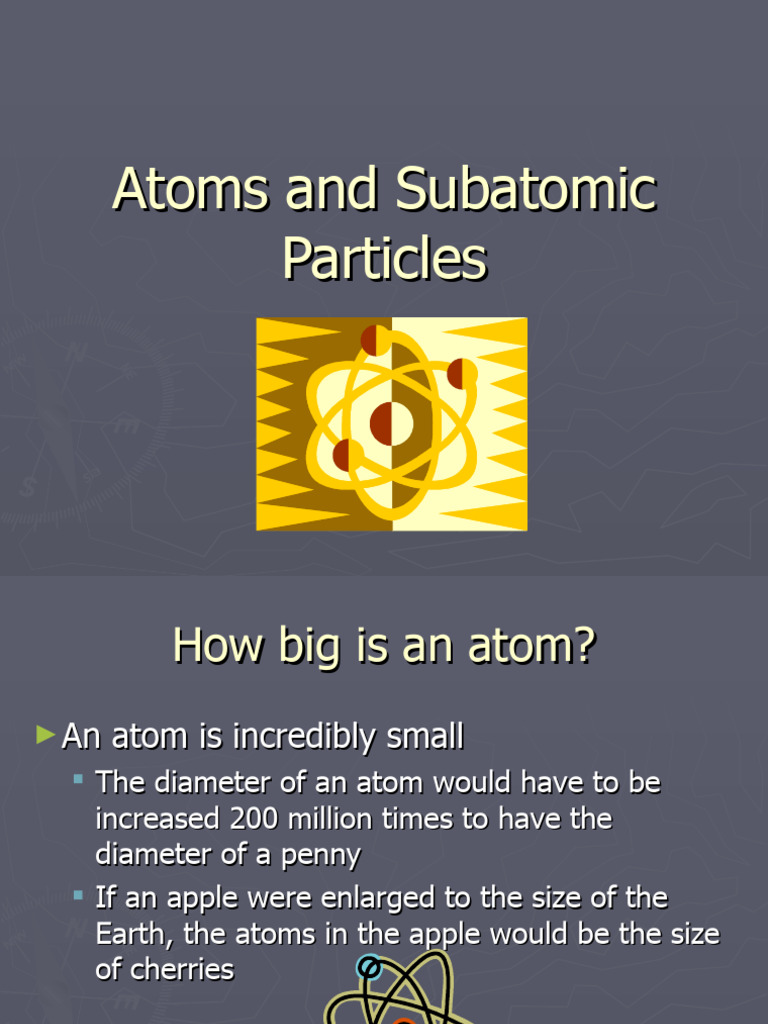In the intricate realm of atomic physics, the quest to understand the dynamics of atomic structure leads us to consider the essential components that constitute matter: subatomic particles. Among these particles—protons, neutrons, and electrons—an exploration of their roles unveils the answers to some of our most pressing inquiries about energy generation, nuclear reactions, and even the fabric of the universe itself. This article delves into which subatomic particles facilitate the splitting of atoms, effectively illuminating the mechanisms underlying nuclear fission and fusion.
The cornerstone of our inquiry begins with the knowledge that the nucleus of an atom is held together by the strong nuclear force, a fundamental interaction that binds protons and neutrons in close proximity. However, the nature of these particles influences the nucleus’s stability and susceptibility to splitting. One pivotal subatomic particle involved in splitting atoms is the neutron. Unlike its charged counterparts, the proton and electron, the neutron is electrically neutral, granting it unique advantages in penetrating atomic nuclei.
The application of neutrons in atomic splitting initiates our contemplation of nuclear fission. When a heavy nucleus—such as that of uranium-235 or plutonium-239—captures a neutron, it becomes unstable. This instability results in the nucleus’s disintegration into smaller nuclei while simultaneously releasing an extraordinary amount of energy, as well as additional neutrons. These released neutrons can propagate the fission process by inducing further fission reactions in adjacent heavy nuclei, sparking a self-sustaining chain reaction. This is the crux of nuclear reactors and atomic bombs alike, showcasing the duality of scientific discovery and moral responsibility.
Exploring further, the mechanism of neutron-induced fission elucidates the pivotal role of neutrons in energy production. In nuclear power plants, carefully controlled fission reactions harness the energy released to generate electricity. The strategic introduction of control rods, which absorb excess neutrons, establishes a delicate equilibrium in the nuclear reaction process. This interplay underscores the profound impacts of neutron behavior on energy generation, challenging our perceptions of power sources and their sustainability.
However, the discussion does not conclude with fission; the nature of atoms presents a parallel concept: fusion. Fusion occurs when lighter atomic nuclei, such as those of hydrogen isotopes, collide under extreme temperature and pressure, resulting in their amalgamation into heavier nuclei—this process is initiated by overcoming electrostatic repulsion, a task where neutrons maintain their sublimely neutral status in facilitating the necessary conditions for this reaction. In a fusion reaction, it is the hydrogen nuclei (protons) that collide and combine, while neutrons assist in maintaining the reaction’s stability, leading to the production of helium and the release of vast energy quantities—a process evident in the sun and other stars.
Investigating the microscopic interactions during these reactions reveals a landscape teeming with possibilities. Neutrons are not only passive participants; they play an integral role in modifying nuclear properties. Their binding proficiency is essential in isotopic stability and decay, making them indispensable in both fission and fusion scenarios. The rich tapestry of scientific discovery surrounding nuclear reactions provides profound insights into the potential for harnessing energy from subatomic phenomena.
Nevertheless, the conversation surrounding ongoing advancements in reactor technology and particle physics begs for greater scrutiny. Research endeavors are looking into neutron sources that could improve the efficiency of fission reactions or develop innovative fusion reactors that will eventually meet humanity’s extensive energy demands without excessive environmental ramifications. The international projects, such as ITER, are testament to this pursuit, shifting paradigm perspectives in energy demands and sustainability.
To invoke curiosity, consider the implications of mastering atomic splitting through neutrons: Could we one day harness the sheer power of stars right here on Earth? As scientists traverse the complexities of nuclear physics, each discovery serves to redefine our understanding of subatomic particles and their interactions within atomic structures. The duality of nuclear reactions encapsulates both humanity’s restraint and ingenuity; the careful navigation of such a path bears immense repercussions on the societal and environmental landscapes.
Ultimately, a profound appreciation of subatomic particles, particularly neutrons, emerges as a focal point in the evolving narrative of nuclear physics. Understanding which particles are pivotal in splitting atoms reveals not only the complexities of our universe but also the continuing journey of scientific exploration toward energy solutions. As we ask ourselves how to best utilize this knowledge for the benefit of humanity, a cultural shift toward embracing scientific literacy and ethical deliberation becomes imperative.
In conclusion, the cloak of mystery surrounding subatomic interactions gradually dissipates through continuous research and innovative thinking. The neutron stands at the forefront of this exploration, embodying the promise of energy transformation while instigating contemplation on broader existential themes. Signs of evolution in nuclear science herald a new era, one wherein knowledge of subatomic realities could hold the key to our shared future, urging us to ponder what lies beyond the veil of the atomic world.












